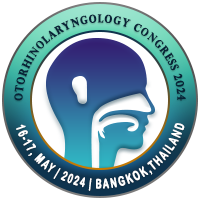
Bassam Romanos
Holy Spirit University of Kaslik, LebanonTitle: Postero-superior tube in a grooved bone vs. transtympanic tube for middle ear ventilation: a retrospective study comparing outcomes in the Lebanese pediatric population
Abstract
Background:
Myringotomy with trans-tympanic T-tube (TTT) placement is the most common surgical procedure performed in children. Finding a technique that provides longer aeration periods, lower complications rates, and less need for subsequent interventions will help the healthcare system from preventable events.
Objectives:
To compare the efficiency and complications rates of the traditional TTT to those of the novel postero-superior tubes in a grooved bone (TGB) for long-term middle ear ventilation in children suffering from recurrent acute otitis media (RAOM), or chronic otitis media with effusion (COME).
Methods:
A total of 200 pretreated ears (96 by TGB and 104 by TTT), were examined after at least 3 years. Data concerning tube condition, and ear outcomes were collected. Pre- and post-operative audiograms were also performed.
Results:
TGB remained in place for longer periods, and it resulted in significantly lower rates of persistent tympanic membrane (TM) perforation (0% vs. 30.8%), TM retraction (14.6% vs. 32.7%), myringo sclerosis (12.5% vs. 38.4%), otorrhea (29.2% vs. 52.9%), and need for topical antibiotics (31.3% vs. 51%). It has also resulted in more significant reduction in the air-bone gap on audiograms.
Conclusions and significance: TGB could be an effective and safe option for middle ear ventilation following COME or RAOM in children.
Keywords: Tube in grooved bone; chronic otitis media with effusion; middle ear ventilation; recurrent acute otitis media; trans-tympanic T-tube; tympanic membrane
Biography
To be updated

